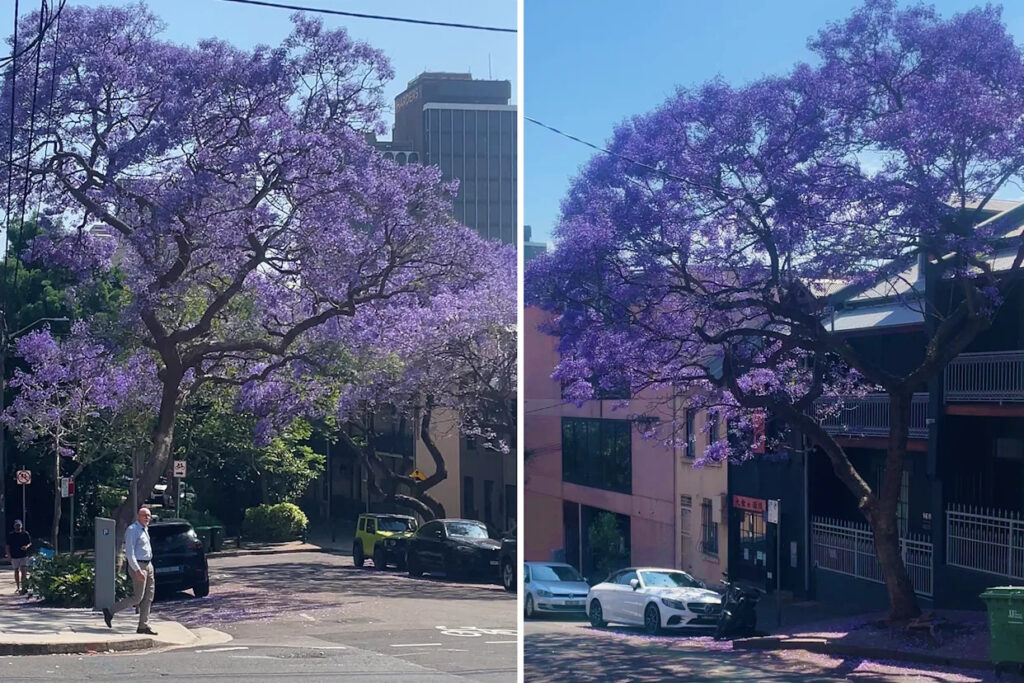
URGENT UPDATE: As the iconic jacaranda trees burst into bloom across Australia, authorities are warning residents of their hidden dangers. This spring, vibrant purple flowers transform streets in cities like Sydney, Brisbane, Adelaide, and Perth, but experts urge caution about these popular ornamental trees.
Officials from Gympie and District Landcare highlight that while jacarandas are visually stunning, they pose significant ecological threats. Luke Mosely, a representative from the organization, warns that jacarandas, originally introduced from South America in the 1800s, can outcompete native species, disrupting local ecosystems.
“Every year, we receive numerous inquiries about jacarandas. The short answer? No!” Mosely said. “These trees may paint a pretty picture, but they don’t support our native wildlife.”
The vibrant blossoms of the jacaranda, known for their trumpet-shaped flowers, create breathtaking scenes as they blanket streets and sidewalks in lilac. However, Mosely emphasizes that these trees are classified as “invasive weeds” in regions like Queensland and NSW, where they can quickly dominate local flora.
Jacarandas grow at an alarming rate of two to three meters per year, which allows them to overshadow and outgrow native plants. Their aggressive root systems can damage nearby structures, including foundations and fences, leading to costly repairs. “They can strangle and disrupt the growth of other plants,” Mosely warned.
Residents often express frustration about the “triggering” impact of jacarandas on their properties. Many have experienced issues with the trees invading stormwater drains and creating maintenance headaches. “They can be manageable in the initial years, but once they reach about 10 meters, their effects become pronounced,” Mosely added.
As jacaranda season peaks, Gympie Landcare encourages Australians to consider native alternatives that are both beautiful and beneficial to local ecosystems. “Our focus is on nurturing native flora that supports our unique wildlife,” the organization stated.
Despite the warnings, jacarandas remain beloved across Australia, with cities like Grafton hosting jacaranda festivals celebrating their seasonal beauty. They are appreciated for their generous shade and drought-tolerant qualities, making them a popular choice for urban landscaping.
As this spring progresses, Australians are urged to share this vital information. The stunning jacaranda trees, while visually appealing, come with ecological responsibilities that could affect the future of native Australian landscapes.
For those seeking to beautify their gardens, Gympie Landcare invites residents to explore their range of native plants that offer aesthetic appeal without the invasive risks.
Stay tuned for further updates on the environmental impact of jacarandas this season as authorities continue to monitor and assess their effects across the nation.






